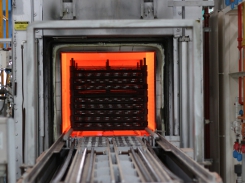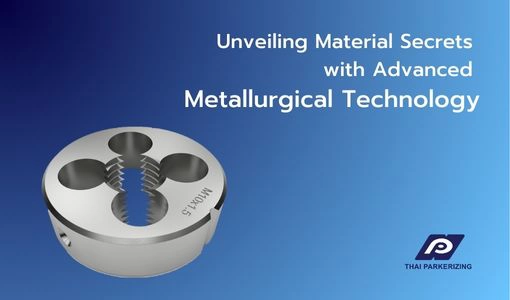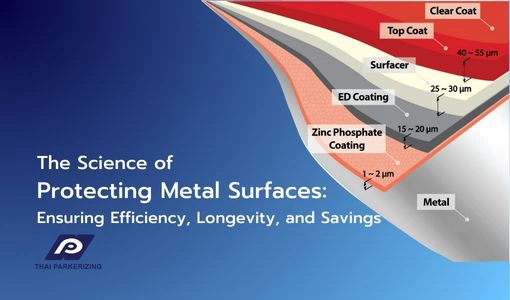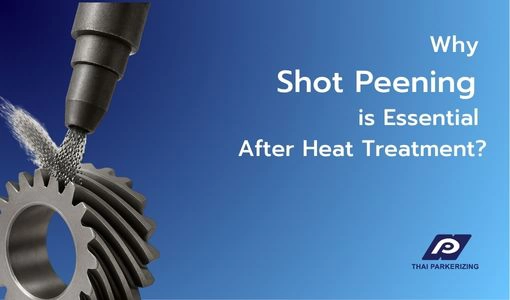- Corporate
- Chemical Products
- Chemical Controller
- Chemical for Paint Booth
- Coil Coating
- Degreasing and Cleaning chemical
- Heat&Cool exchanger (PLATECOIL)
- Hydrophilic
- Manganese Phosphate
- Nano-coating (Pallucid)
- Rolling Oil
- Rust Preventive Product
- Stearate Soap Lubricant/Dry-in-Place Lubricant (PULS)
- Trivalent Chromium/Non-Chromium
- Zinc Phosphate/Iron Phosphate
- Processing Services
- Laboratory Services
- Articles
- What's New
- Contact Us
- Privacy Policy
What is metal coating and what are its benefits?
28 March 2024

Many materials, such as steel and aluminum, are already quite strong. However, when they undergo an additional metal coating process, their properties can be further improved, offering a wide range of benefits for various applications. Despite this, many people may still wonder what metal coating actually is and how it can benefit these materials. In this article, we will provide a complete explanation of metal coating, including its definition, types, and advantages. This information will allow us to apply metal coating correctly and optimally.
What are the benefits of metal coating?
Metal coating is a process of applying various materials or chemicals onto the surface of a workpiece to enhance its performance. Metal-coated materials become more shiny, more eye-catching, and are also protected from external contaminants such as water, dust, humidity, dirt, and corrosive chemicals. Therefore, many materials, especially iron, must be coated before use.
What are the advantages of applying a coating to metal surfaces?

As explained above, metal plating is like a protective shield that prevents the metal from coming into contact with the external environment. The main benefits of metal plating can be summarized as follows:
-
Enhances the appearance of metals:
Metal plating makes metals more shiny, luxurious, and high-end, often eliminating the need for additional painting. -
Extends product lifespan:
Metal plating acts as a protective barrier, reducing corrosion, rust, and wear while increasing strength and durability. -
Reduces scratches:
Metal plating minimizes scratches caused by rubbing, impact, or sharp objects. -
Provides fire resistance:
Most coatings act as insulators, preventing fires from spreading and reducing the risk of fuel ignition.
Popular techniques used in metal finishing

-
Painting
is a basic method of coating metal surfaces. It involves simply spraying or brushing paint onto the metal. This process helps to prevent corrosion and rust caused by environmental factors such as rain, humidity, dust, and sunlight. It also reduces scratches and enhances the appearance of the workpiece, making it an affordable metal coating option. -
Varnish coating
can be either glossy or matte. Glossy coatings provide a shiny, reflective, and luxurious finish, while matte coatings offer a dull, stylish appearance. Varnish coatings are commonly applied to paper or boxes to protect them from water and moisture, prevent damage, and increase the value of the product. -
Hot-dip galvanizing
also known as hot-dip zinc coating, is commonly used to coat iron. The process involves immersing iron into a molten zinc bath at a temperature between 435 and 455 degrees Celsius, resulting in a zinc coating on the metal surface. This coating enhances the strength, durability, and resistance to scratches and chemical corrosion, making it a popular technique. -
Electroplating
is a metal coating method that utilizes electrical principles. An electric current is passed through a metal to dissolve metallic salts. The positive ions then migrate to the workpiece, which acts as a negative electrode (cathode), and receive a negative charge. This process results in a thin layer coating on the metal surface, providing effective protection against damage. -
Aluminum anodizing
involves sanding the material and then immersing it in an anodizing chemical solution. This process creates an oxide layer on the metal surface due to the dissociation of compounds in the conductive solution. The resulting thicker metal surface enhances resistance to chemical corrosion and environmental factors. -
Zinc flake coating
also known as zinc-aluminum flake coating, is a corrosion protection process that uses zinc and aluminum. It offers cathodic and galvanic corrosion protection and is free of chromium, making it environmentally friendly. This technique can be applied to various materials. -
PVD coating
involves a vacuum deposition process that creates a thin, micron-level film on the surface. This coating offers exceptional hardness, durability, and wear resistance without altering the dimensions of the workpiece. -
Electroless nickel plating or Kanigen®
is a metal coating process that does not require an electric current. The resulting coating is hard, heat-resistant, and provides excellent corrosion and wear protection. It is suitable for various metals, including steel, stainless steel, and aluminum. Kanigen coatings offer uniform thickness and better dimensional control compared to conventional coatings. -
Hydrophilic coating
is applied to the cooling coils of automotive and home air conditioning systems to extend their lifespan and maintain cooling efficiency. It prevents rust caused by humidity and reduces odors from bacteria by adding non-harmful substances, ensuring clean and safe air.

Metal coating is a crucial process that significantly extends the lifespan and value of metal components. As demonstrated by this information, it enhances durability, aesthetics, and overall performance, making it a worthwhile investment. Thai Parkerizing provides comprehensive metal coating services, including chemical products and environmentally friendly R&D analysis. We offer customized technical support and services, ensuring optimal material utilization.









